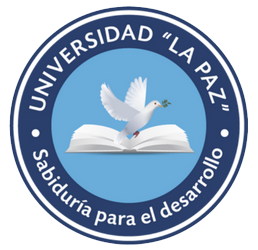
Estrategias didácticas para mejorar la creatividad de los estudiantes de arquitectura. Proyecto: Vivienda unifamiliar
Teaching strategies to enhance architecture students' creativity. Project: Single-family homeEl estudio aborda la necesidad de estimular la creatividad de los estudiantes de Taller II de la carrera de Arquitectura. El objetivo de la investigación fue fundamentar una propuesta de estrategias didácticas para mejorar la creatividad de los estudiantes. Su justificación radica en la importancia de esta habilidad para la resolución de problemas mediante soluciones originales. La población estuvo constituida por docentes y estudiantes de la carrera de Arquitectura de la UATF, y la muestra no probabilística incluyó al director de carrera, a 10 docentes y 40 estudiantes del Taller II. Los datos se recolectaron mediante la observación, el test de creatividad EMUC para los estudiantes, y una entrevista al director de carrera y a los docentes, implementando guía de observación, test y de entrevista. Los resultados develaron niveles medios y bajos de creatividad en los estudiantes, una evaluación empírica y no formalizada de la creatividad en los talleres, y limitaciones en el entorno educativo que no estimulan la creatividad. Se concluye con la necesidad de aplicar la propuesta de estrategias didácticas para mejorar el desarrollo de la creatividad verbal, aplicada y visomotora mediante talleres modulares teórico-prácticos, con el fin de superar las deficiencias observadas y preparar a los futuros arquitectos para enfrentar los desafíos con soluciones creativas, humanas y originales en el diseño de viviendas unifamiliares.
This study addresses the need to stimulate the creativity of students in Workshop II of the Architecture program. The objective of the research was to base a proposal for teaching strategies to improve student creativity. Its justification lies in the importance of this skill for problem-solving through original solutions. The population consisted of faculty and students of the Architecture program at UATF, and the non-probability sample included the program director, 10 faculty members, and 40 students from Workshop II. Data were collected through observation, the EMUC creativity test for students, and an interview with the program director and faculty, implementing an observation guide, test, and interview. The results revealed medium and low levels of student creativity, an empirical and informal assessment of creativity in the workshops, and limitations in the educational environment that do not stimulate creativity. The article concludes with the need to implement the proposed teaching strategies to enhance the development of verbal, applied, and visual-motor creativity through modular theoretical and practical workshops. This is intended to overcome the observed shortcomings and prepare future architects to face challenges with creative, humane, and original solutions in the design of single-family homes.
Referencias
- Alba Dorado, M. I. (2016). Arquitectura y creatividad. Reflexiones acerca del proceso creativo del proyecto arquitectónico. Arquitectura Revista, 12, 122.
- Bribiesca-Ortega, A. (2021). Metodología de diseño para el desarrollo de habilidades creativas con un lenguaje arquitectónico coherente. ECORFAN.
- Cervera, D. (2010). Didáctica de la tecnología. BIGSA.
- Pérez, F. J., & E., X. (2015). Metodología del diseño, historia y nuevas tendencias. Narcís.
- García. (2020). Programa lúdico para el desarrollo creativo en estudiantes de primer año de secundaria del colegio santa María Reina, Chiclayo [Tesis de pregrado, Universidad César Vallejo]. Repositorio de la Universidad César Vallejo. https://alicia.concytec.gob.pe/vufind/Record/UCVV_b893011d55ee30b45ad451df1cb90900/Details
- González, A. E. (2008). Aprender a Enseñar Fundamentos de Didáctica General. La Mancha.
- González, R. y. (2004). Proceso de Enseñanza Aprendizaje. (Publicación propia).
- Idrovo Vintimilla, D. (2016). Reseña del libro de Sophia Vyzoviti folding architecture spatial, structural and organizational diagrams. ASRI Arte y Sociedad Revista de Investigación,10. http://asri.eumed.net/10/resena.pdf
- Martínez, M. D. (2007). Ideas para construir un currículo creativo ambiental a partir de la acción comunicativa.
- Paiva Crispín, G., Aguilar Salvatierra, G., & Aradas Rodríguez, A. (n.d.). Estrategias y técnicas didácticas para desarrollar la creatividad en la asignatura taller de proyectos arquitectónicos de primer curso, de la carrera de arquitectura [Tesis doctoral]
- Raffaelli, B. (2016). The Fast Guide to Architectural Form. Bis Publishers.
- Sánchez, P. (2006). Detección y registro de niños de secundaria con capacidades sobresalientes en zonas rurales y sub urbanas del estado de Yucatán Reporte final [Informe técnico]. Consejo Nacional de Ciencia y Tecnología, Fondos Mixtos.
- Uatf. (2021). Microauricular Carrera de Arquitectura.

